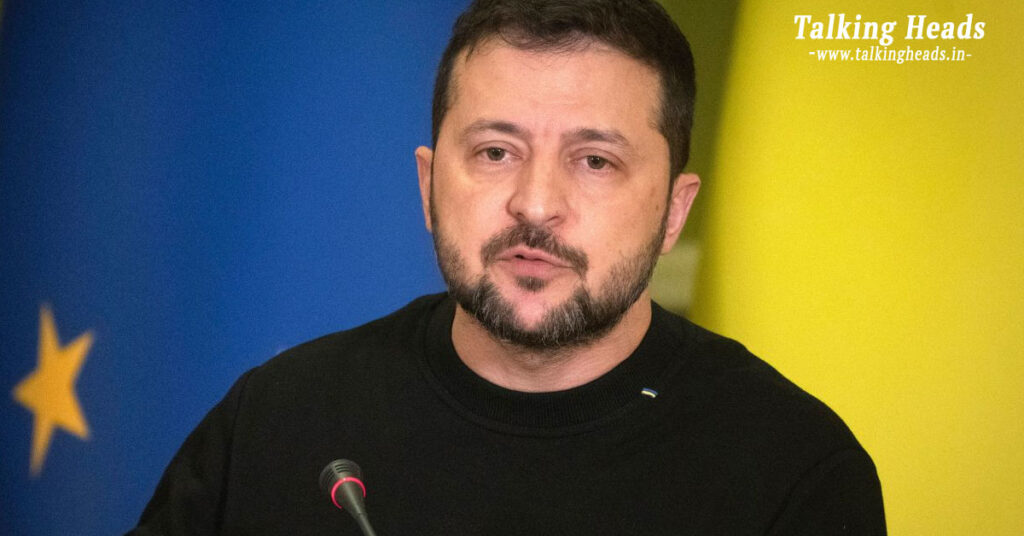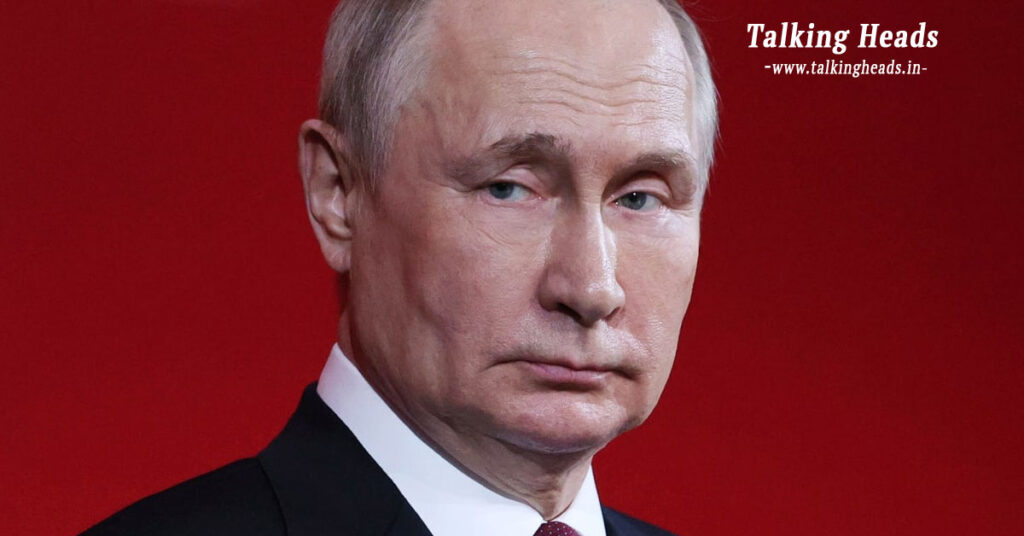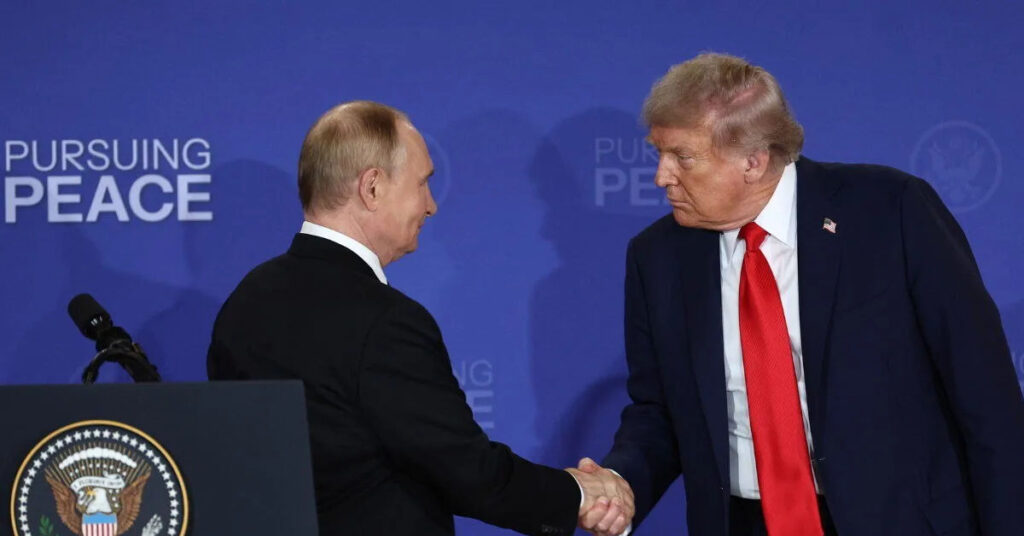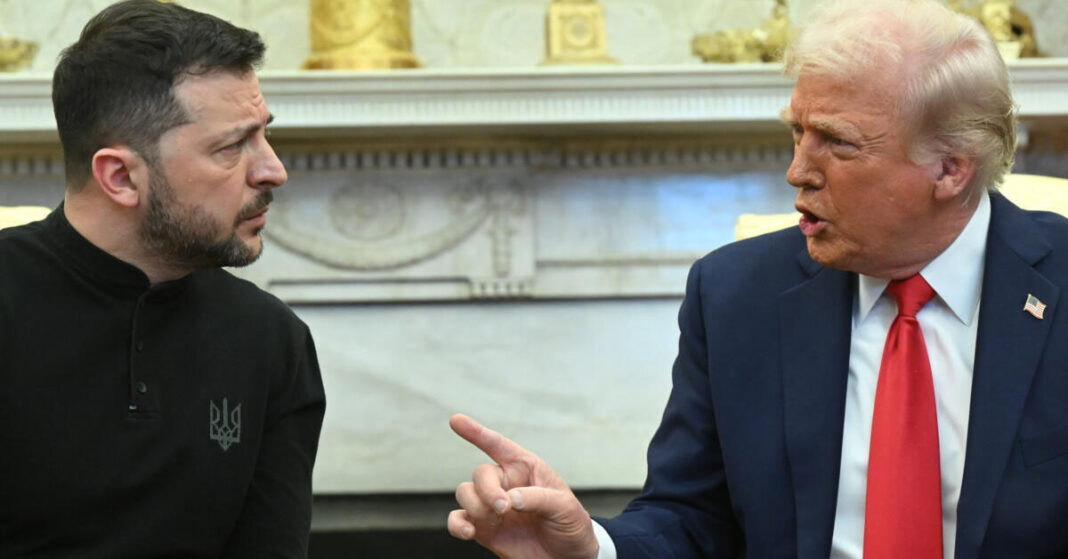High-Stakes Meeting at the White House
Table of Contents
U.S. President Donald Trump will meet Ukrainian President Volodymyr Zelensky at the White House today in a bid to explore ways to end the ongoing Russia-Ukraine war. The talks come just three days after Trump’s inconclusive meeting with Russian President Vladimir Putin, raising expectations but also concerns about the direction of U.S. diplomacy.
Alongside Zelensky, several European leaders will attend the talks, including European Commission President Ursula von der Leyen, NATO Secretary-General Mark Rutte, British Prime Minister Keir Starmer, German Chancellor Friedrich Merz, French President Emmanuel Macron, and Italian Prime Minister Giorgia Meloni. The presence of top European allies underlines the critical nature of this meeting, with all sides wary of another breakdown.
Trump and Zelensky’s Tense Relationship
Today’s engagement marks the third face-to-face meeting between Trump and Zelensky in just seven months. Their previous encounters were far from smooth. During Zelensky’s last visit to Washington, the two leaders clashed publicly. Trump accused the Ukrainian president of being ungrateful for U.S. aid, a heated exchange that derailed a planned mineral trade deal between the two nations.
The fallout extended beyond diplomacy. At Pope Francis’s funeral in Rome earlier this year, the leaders met privately, but the bitterness of their last debate remained evident. European leaders now hope their presence will help prevent a repeat of such confrontations and keep the focus on peace negotiations.
Zelensky’s Three Demands in Talks
According to Ukrainian officials, Zelensky will prioritize three key issues during discussions with Trump:
- Immediate end to civilian killings in Ukraine.
- Tougher sanctions on Russia to increase pressure on Moscow.
- A permanent ceasefire followed by international security guarantees for Ukraine.

Zelensky has also expressed openness to a trilateral meeting involving the U.S., Ukraine, and Russia, but he insists that any compromise must safeguard Ukraine’s sovereignty and territorial integrity.
Putin’s Non-Negotiable Conditions
Russia currently controls about 20% of Ukrainian territory, including Crimea, Donetsk, Luhansk, Kherson, and Zaporizhzhia. Putin has made it clear that Moscow will not return these areas, which the Kremlin considers part of Russia’s historic and strategic legacy.

In his recent meeting with Trump, Putin reiterated that peace talks would only proceed if Kyiv relinquishes claims over these regions and abandons its pursuit of NATO membership. For Moscow, Ukraine must remain outside the Western military alliance, serving instead as a “buffer zone” on Russia’s western frontier.
Clash Over Land-for-Peace Proposal
Trump has floated the controversial idea that Ukraine might have to exchange land to secure peace, a stance that has alarmed Kyiv. Zelensky has rejected this outright, stressing that Ukraine will not cede “a single inch” of its territory. He argues that such a concession would weaken national sovereignty and invite further Russian aggression in the future.
Putin, however, has informally proposed that Russia could stabilize its frontline in southern Ukraine if Kyiv surrendered parts of Donetsk. The eastern region, rich in coal and heavy industry, remains critical for Ukraine’s economy and security, making it unlikely Zelensky would ever consider such a deal.
Europe Pushes for Security Guarantees
European nations, particularly Germany, France, and the United Kingdom, have firmly opposed Russia’s conditions. They insist that any settlement must come with binding security guarantees for Ukraine, otherwise peace would remain fragile.
European leaders argue that ignoring Kyiv’s role in shaping agreements would not only be unjust but also strategically dangerous. Their stance complicates Trump’s efforts to broker a deal, as Putin has warned against European “interference” in talks.
Inside the Trump-Putin Meeting: Key Takeaways
When Trump and Putin met three days ago, their discussions lasted nearly three hours but ended without a ceasefire agreement. Some notable points emerged:

- No ceasefire deal: Trump admitted that negotiations fell short of producing a concrete truce.
- Proposal for trilateral summit: Trump suggested hosting a three-way meeting involving himself, Zelensky, and Putin, signaling his intent to play mediator.
- Pause on new sanctions: Despite earlier threats, Trump decided against imposing fresh sanctions on Russia or countries buying Russian oil.
- Potential prisoner swap: Both leaders hinted at progress on an exchange of captives, though details remain uncertain.
U.S.-Ukraine Mineral Deal Offers Economic Leverage
Despite tensions, Washington and Kyiv signed a major mineral cooperation agreement in April. The deal gives the U.S. preferential access to Ukraine’s emerging mining projects in exchange for American investment in Ukraine’s reconstruction.
The agreement includes the creation of a joint investment fund, with Ukraine contributing revenue from its natural resources and the U.S. pledging direct funding or military support. While the specifics remain unclear, the deal could significantly strengthen Ukraine’s post-war economy, provided political stability is achieved.
What Lies Ahead?
As Zelensky arrives in Washington, expectations are high but tempered by realism. Trump’s belief in land swaps as a path to peace directly contradicts Kyiv’s uncompromising position on territorial sovereignty. Meanwhile, Putin’s rigid stance and Europe’s insistence on Ukraine’s security guarantees leave little room for middle ground.
The outcome of today’s meeting could shape not only the future of the war but also the credibility of U.S. leadership in global diplomacy. With European leaders at the table, the White House may become the stage for either a diplomatic breakthrough or yet another stalemate in one of the world’s most dangerous conflicts.










